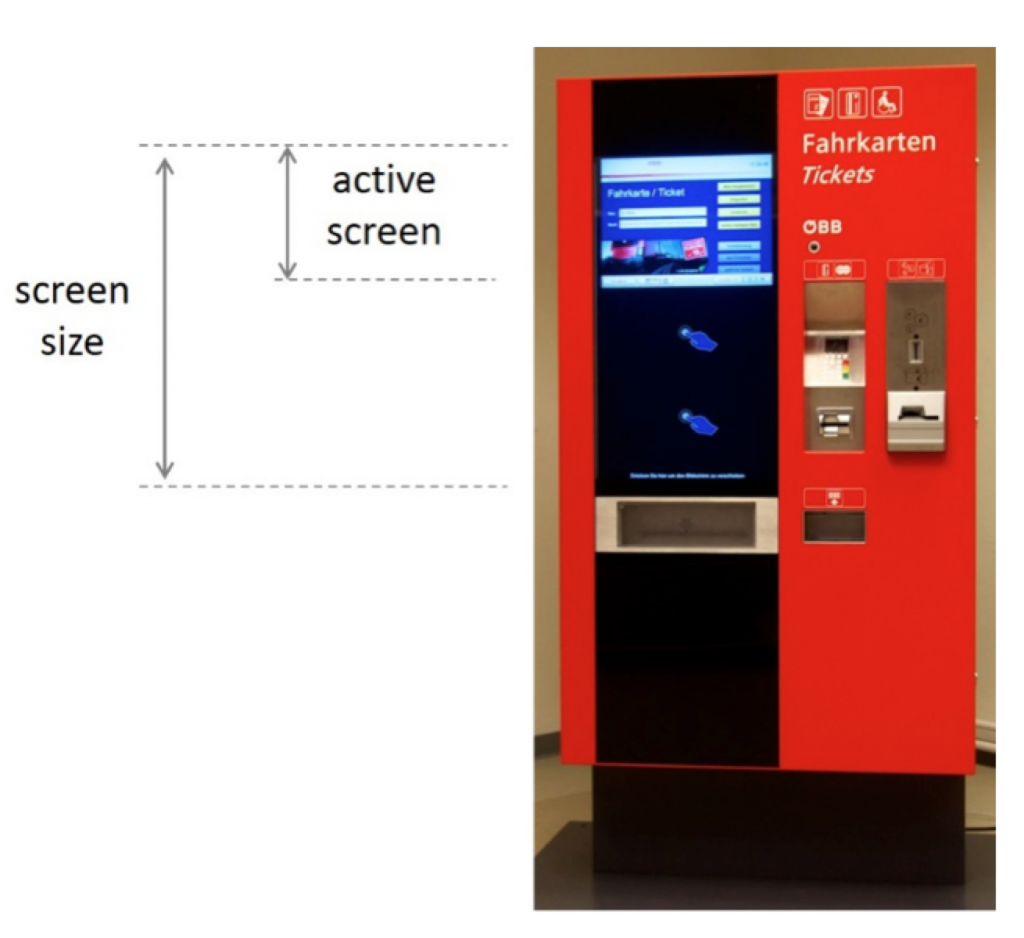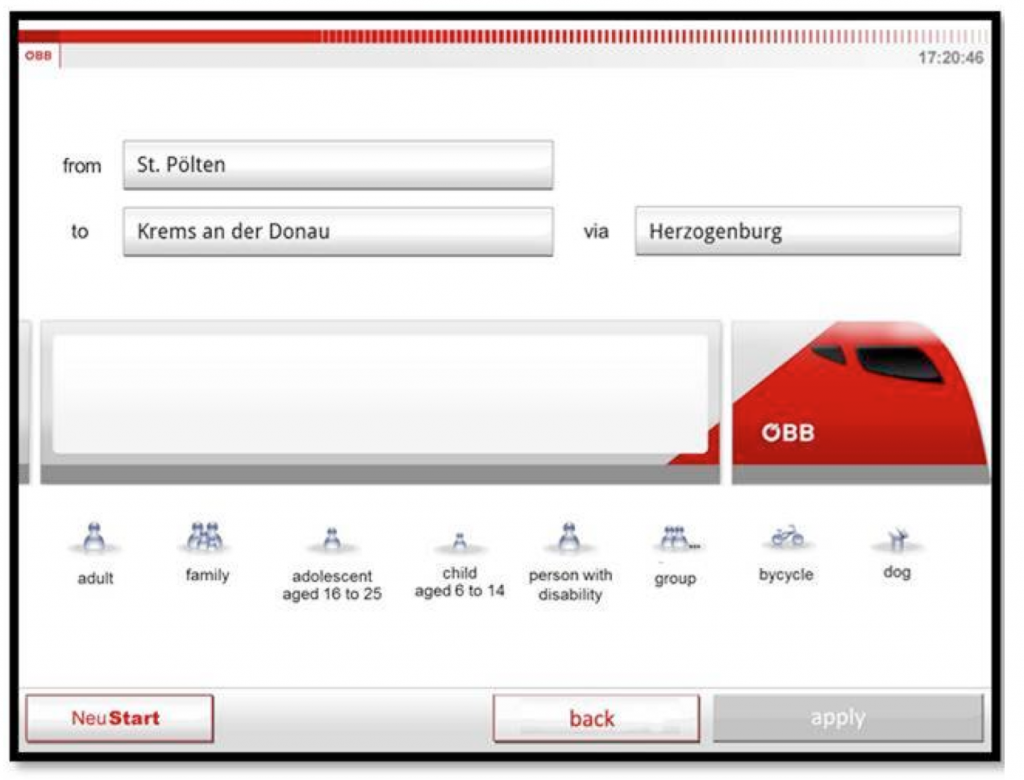“Help me do it myself” – Improving Self-Service Technologies through User-Centered-Design
Published on December 31, 2014
Living in a self-service society we are often confronted with different technologies when settling our daily affairs, such as online travel sites or public terminals like ATMs or ticket vending machines. While self-service technologies offer some advantages like 24/7 availability, there are serious disadvantages as well. Imagine buying a ticket at a ticket vending machine just minutes before the train is due to leave. Due to the complexity of the fare systems this could turn out to be a stressful experience. Especially for the elderly and those with little experience with the use of contemporary technology, this challenge could even pose a barrier to participation in daily life. Recent studies show that many railroad customers do not have confidence in their ability to operate ticket vending machines and hence prefer to buy their tickets at the counter [1].
Researchers at Danube University Krems` Center for Cognition, Information and Management focus on the question how to support people in their daily lives and work utilizing carefully designed information and technological systems as e.g. self-service machines in the context of public transports. Within the INNOMAT project, the research team investigated ways to design a public self-service terminal that is not only usable by everyone but also enhances people’s confidence in successfully operating the machine. Following these principles, the research team and the project partners [2] developed a prototype for an innovative ticket vending machine.
Karin Siebenhandl, Günther Schreder and their colleagues received the IEEE Joenk award for their IEEE ProComm paper [3] on their user-centered design approach which emphasizes the needs of the different target groups throughout the whole development process. In alternating test and evaluation loops more than 250 users were actively involved in focus groups, observations, interviews, and experiments from the very first stages of development. Special attention was paid to user experience, which describes the quality of the interaction with a technological device or system. A prototype for a novel generation of ticket vending machines was developed in three phases: (1) an analysis of the context of use, (2) a requirements analysis and (3) iterative testing and evaluation of different hardware and software interaction designs.
The resulting ticket vending machine features an innovative, vertical touch screen that automatically adapts to the users´ height. This setup not only enhances the accessibility for wheelchair users and people with visual impairments (as they can easily step closer to the screen), but also facilitates the comfortable handling for many users.
Another highlight is a novel, narratively structured user interface that leads through the whole purchasing process [4]. The interface is based upon the graphical metaphor of “putting the passengers inside the train.” Experiments showed that this metaphor is understood intuitively and improves users’ confidence in using the system. Prior knowledge about fare systems is not required, as the optimal choice is calculated by the machine based upon the customer‘s choices. Frequent train travelers can use a personalization option and save their favorite routes as well as different reductions on their frequent traveler’s card – this information can later be accessed via the machine‘s QR code reader.
Summary: An important challenge for the design of public information and self-service systems like a ticket vending machine is the heterogeneity of possible users and their manifold demands. It is necessary—and worth the effort—to search for reasonable compromises and novel approaches to meet these diverse requirements. In a public transport setting, where ticket counter closures have left different groups of people dependent on ticket vending machines to meet their mobility needs, a single, effective system is required. The user-centered design approach proved to be a valuable framework for the development and design of self-service systems.
You can get the full paper via IEEE Xplore.
[1] G. Schreder, K. Siebenhandl, E. Mayr, and M. Smuc, E. Loos, L. Haddon, and E. Mante-Meijer, Eds., “The ticket machine challenge: Social inclusion by barrier-free ticket vending machines,” in Generational Use of New Media. Farnham, UK: Ashgate, 2012, 129-148.
[2] Business partners included ÖBB Personenverkehr AG (Austrian Rail), Allied Panels (Hardware), Create (Design), Verkehrspuls (Project management) and PL.O.T. (Software)
[3] Siebenhandl, K., Schreder, G., Smuc, M., Mayr, E., & Nagl, M. (2013). A User-Centered Design Approach to Self-Service Ticket Vending Machines. Professional Communication, IEEE Transactions on, 56(2), 138-159. http://ieeexplore.ieee.org/xpl/articleDetails.jsp?arnumber=6515185
[4] Schreder, G., Siebenhandl, K., Mayr, E., Smuc, M., & Nagl, M. (2011). Narrative interaction as means for intuitive public information systems. International Journal of Public Information Systems, 7(3). http://www.ijpis.net/ojs/index.php/IJPIS/article/view/91



